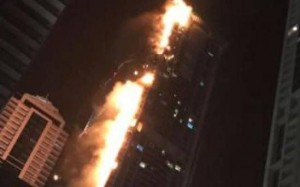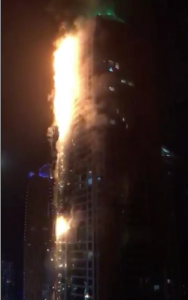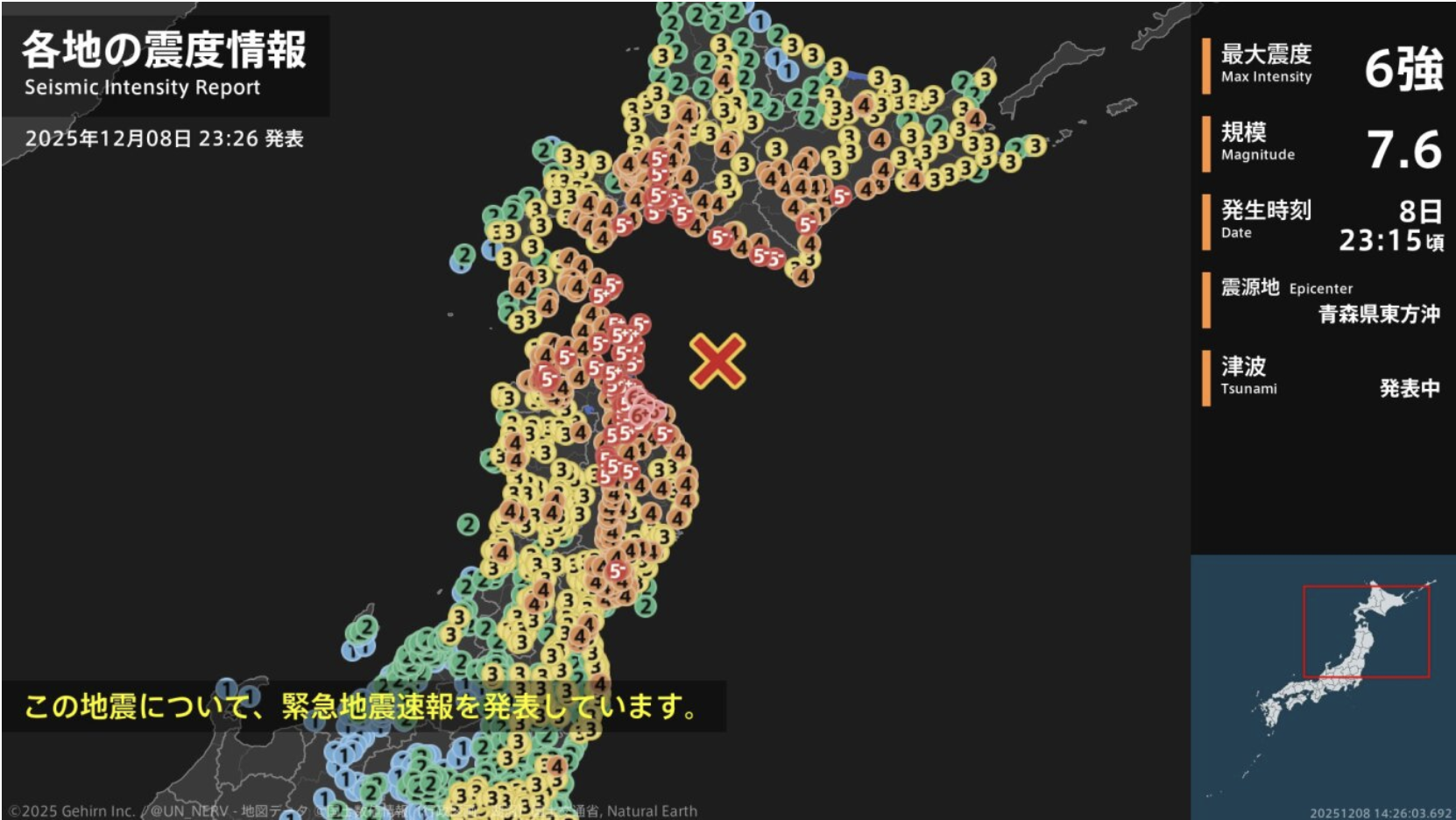A fire ripped through one of the world’s tallest residential towers in Dubai on Thursday night, sending panicked residents fleeing from the building.
Debris could be seen spiralling to the ground across the famous Marina district of the city as the fire consumed multiple floors of the Torch Tower after midnight.
Authorities quickly evacuated the residents and no injuries were reported.
“We were sleeping and we woke up to the fire alarm and people screaming. We ran down the stairs and it took us about 10 minutes to reach from the 50th floor.
“The fire was very strong at that time, about 1 a.m. Then it started calming down over the next two hours. It started on the 67th floor, that’s what we were told.”
Dubai Civil Defence said the fire had been brought under control and cooling operations were underway.
The incident may revive questions about the safety of materials used on the exteriors of tall buildings across the wealthy Gulf region and beyond.
The 1,100ft, 79-storey skyscraper, which is known to be popular with expatriate residents of the UAE city, was devastated by a fire in February 2015. There were no deaths in that fire.
The external cladding on the building was blamed for the rapid spread of the 2015 fire, leading to the decision to fully renovate the exterior cladding – works which began last summer and were believed to be ongoing.
In June, a fire at Grenfell tower in west London led to at least 80 deaths.
The growth of the fire was made worse by the tower’s exterior cladding, which was similar to the materials used at Dubai’s Torch tower.
Cara Spillane tweeted: “Terrifying to see Torch Tower, in the area I live in (Dubai Marina) on fire now.
“Hope everyone gets out OK.”
Reports on social media suggested the fire reached the roof rapidly, with an entire side of the building engulfed in flames.
A witness told Gulf News: “Smoke is everywhere. The streets are covered in debris.”
Authorities later shared a photo of the charred and blackened tower but it was no longer visibly in flames. Officials said they were now working on providing shelter for those affected.
The UAE revised its building safety code in 2013 to require cladding on all new buildings over 15 metres (50 feet) tall be fire-resistant, but older buildings are exempt.
Most of Dubai’s approximately 250 high-rise buildings use cladding panels with thermoplastic cores, UAE media have reported. Panels can consist of plastic or polyurethane fillings sandwiched between aluminium sheets.
Such cladding is not necessarily hazardous, but it can be flammable under certain circumstances and, depending on a skyscraper’s design, may channel fires through windows into the interiors of buildings.
In January Dubai announced tougher rules to minimise fire risks after a series of tower blazes in the modern emirate mostly due to flammable material used in cladding, a covering or coating used on the side of the buildings.
On New Year’s Eve 2015 a fire broke out in a luxury hotel, injuring 16 people hours before a fireworks display nearby.
In November 2015, fire engulfed three residential blocks in central Dubai and led to services on a metro line being suspended, although no one was hurt.
Ask me anything
Explore related questions







